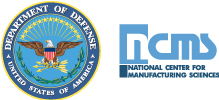042 – “UTC and Maintenance Recovery Team Process”
Author: Capt Ryan Huff
Company: USAF
Phone: 479-4504
Email: ryan.huff.2@us.af.mil
At first glance, organizing and posturing teams to be ready to deploy at a moment’s notice does not sound like the most innovative breakthrough of the 21st century. However, if you are managing limited resources at the world’s busiest maintenance en route squadron, a personnel management process change can produce amazing results. As the gateway for multiple AORs, the 721st Aircraft Maintenance Squadron is given extraordinary responsibility. We provide full maintenance capabilities executed by dual-airframe qualified personnel while simultaneously maintaining four unit type codes (UTC) packages and providing maintenance recovery teams (MRTs) throughout EUCOM, AFRICOM, and CENTCOM.
As Air Mobility Command’s only en route Aircraft Maintenance Squadron, we generate approximately 2,000 missions annually with just 255 personnel and since 2015, have supported more than 200 MRTs and deployed over 900 man-days. Maintaining morale and minimizing fatigue to maximize maintenance capabilities is a challenge. In order to mitigate risk to personnel and the mission, subject matter experts (SMEs) in the unit mapped out our MRT selection process, which identified an inefficient way to select personnel. This legacy process was “plug and play” in that whomever was qualified or available when the unit was tasked, was selected. This led to the same “go-to” members traveling multiple times a month, which produced fatigue and unpredictable shift schedules.
Unit leadership and SMEs conducted an in-depth process review and reengineered the MRT process to meet the demands levied upon the unit. The new process couples our four UTCs with a 30-member qualified MRT mitigation team that is trained and medically prepared to deploy. The team fills this critical role for 6 months, after which new members are selected. By coupling our UTC packages with the MRT mitigation team, squadron leaders are better prepared to meet requirements by maintaining the proper amount of deployment ready personnel, which produces a proactive maintenance readiness posture. Additionally, our team developed an MRT Risk Analysis Matrix to assess scheduling, mission, and human factors associated with MRT requirements across the globe in varying force protection conditions. The matrix advises unit and senior leadership by raising concerns to the appropriate decision authority based on unique circumstances of the tasking and location.
Taking care of Airmen and their families while safely executing the mission are top priorities; this initiative–restructuring the MRT process–improved quality of life for our squadron while enhancing mission effectiveness. The benefits of this process adjustment include reduced training requirements by having a steady-state pool of postured members, improved decision-making capabilities, more effective/predictable personnel management, enhanced unit readiness, and improved resiliency. Whether in garrison or deployed, our Airmen are better postured and focused to execute 24-7 ops.

